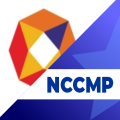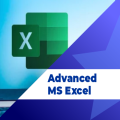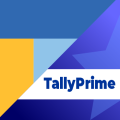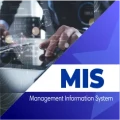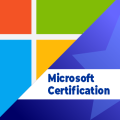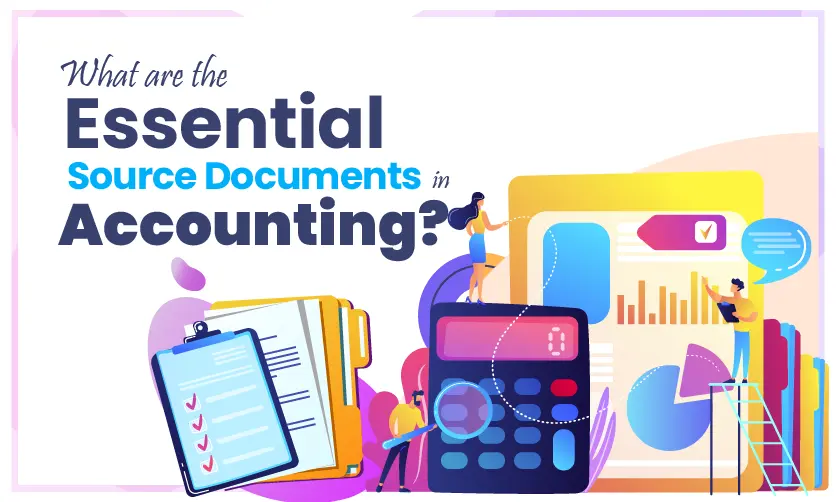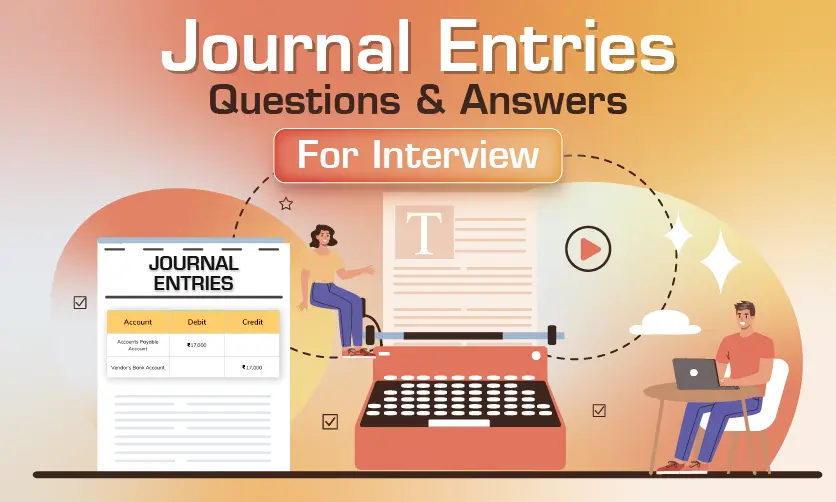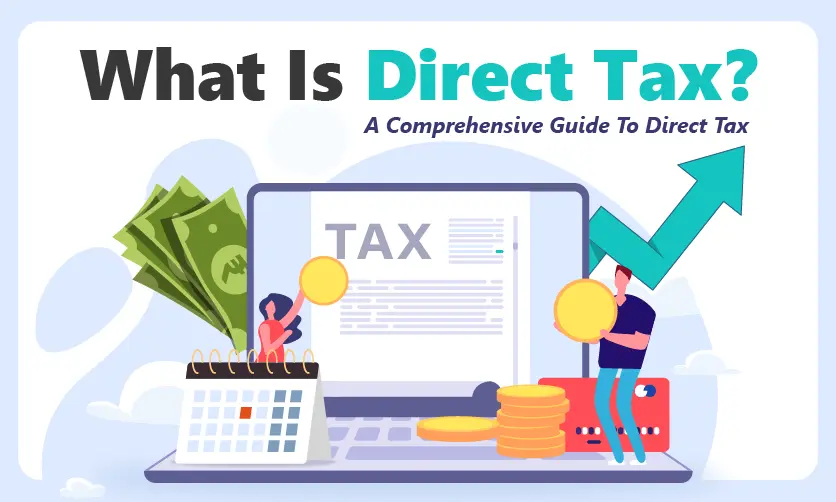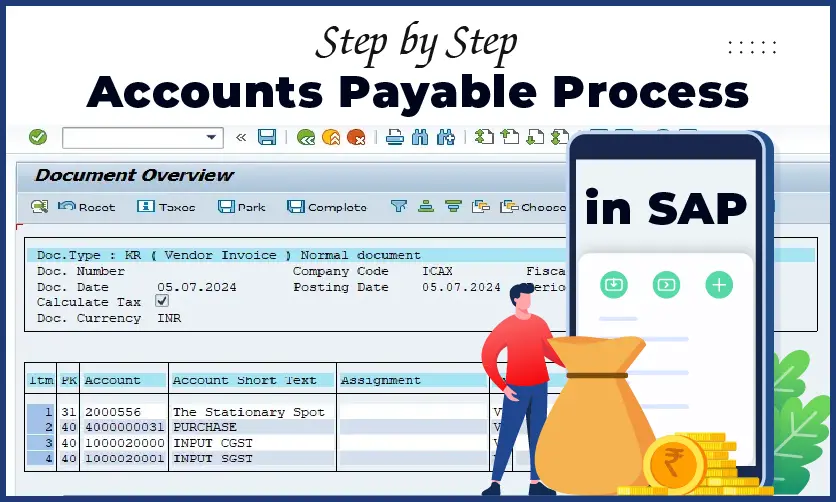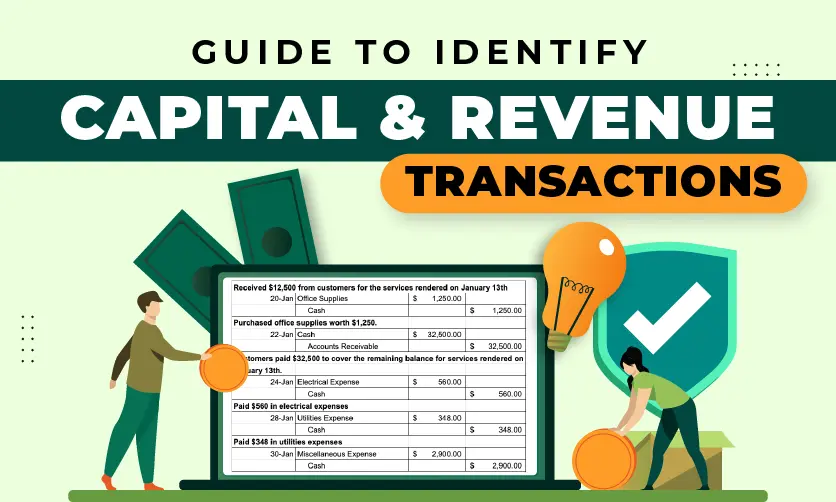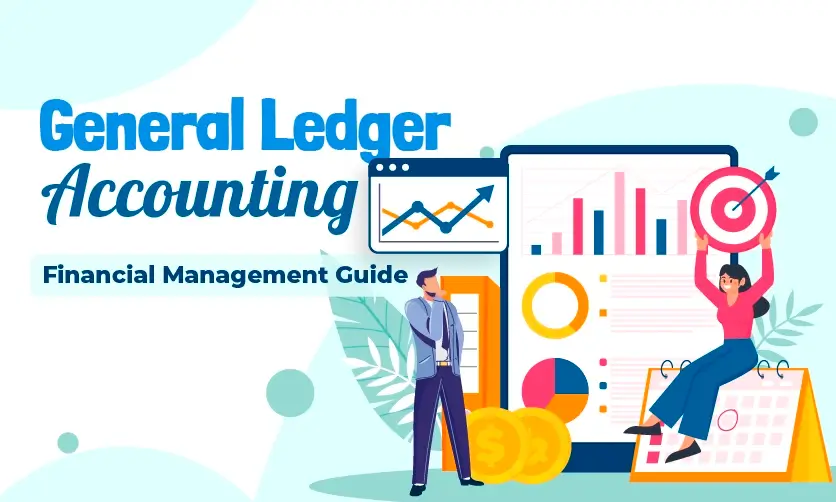
General Ledger Accounting: Financial Management Guide
In the world of finance, maintaining a well-structured, accurate report is not only necessary but also important for tax compliance. Whether it’s a small-stage startup or a big business for managing finances, they all depend on the General Ledger Accounting system.
If you are new to the accounting world or need to learn about general ledger accounting, then this blog is a perfect guide for you. It equips you with the foundation of a general ledger, its types, working style, and much more.
Get ready to dive into general ledger accounting to enhance your knowledge and make yourself industry-ready. Let’s first understand the meaning of a general ledger.
Table of Contents
What is a General Ledger?
A digital record book that keeps the details of every transaction, from sales and purchases to expenses and investments. It acts as a central nervous system for financial records.
In other words, the general ledger can narrate your company’s financial health by delivering reports on its current finances to predict future performances.
The general ledger forms the base of financial statements like balance sheets and income statements that are important for decision-making, attracting investors, and regulatory compliance.
How General Ledger Accounting Works
A General Ledger accounting system works on five components, and each one has its impact on the overall finances of the company. Let’s go through each one in depth:
- Chart of Accounts: This is the first component that categorizes each transaction into a specific account based on its nature, like Cash, Inventory, or Salary. Its purpose is to place every transaction in the right place so that anyone can find it easily.
- Transaction Entries: Now every transaction that happens has specific details like the date of the transaction, amount, account affected, and a brief description. All these details are entered at this stage to capture accurate details.
- Debits and Credits: Debits cause an increase in assets and expenses, while credits represent an increase in revenue, liability, and equity. Both data have equal importance in accounting, and this particular component of general ledger accounting maintains it efficiently.
- Subledger: A few accounts have complex transactions like accounts receivable or inventory that need additional categories to store these data. To fulfill this demand, the concept of a sub-ledger is introduced, which contains minute details about specific areas of finance.
- Trial Balance: This periodic report contains the data summary of all the transactions in general ledger accounting. This report ensures that all the debits and credits match accurately and create a balance. A Balanced trial balance means the narrative makes sense and the financial picture is clear.
Why is General Ledger Accounting Crucial?
Maintaining company financial data records is the top priority for every organization for smooth business operations. In respect of this, companies deployed GL to complete their accounting tasks. Here we have explained the working structure of the General Ledger accounting system:
- Accurate Financial Reporting
The main function of GL is to keep all the financial statements, like balance sheets, income statements, and cash flow statements, accurate. All these financial statements are important for attracting investors, and complying with regulations. Thus, GL makes sure that every piece of data is up-to-date and right. - Regulatory Compliance
GL works by maintaining the accounting standards set by governing bodies. The GL ensures that transactions are recorded and reported according to standards, avoiding heavy fines and legal penalties. - Internal Controls
Maintaining the financial integrity of the companies is an important task for organizations. The General Ledger accounting system works under this flow only to prevent any fraud and errors. All the transactions must cross an audit trail, which helps identify and rectify errors and ensures no mismatch in the final data. - Tax Preparation:
With the help of general ledger accounting, you can maintain all the financial data correctly. Thus, it reduces your time and effort spent on tax filing. - Performance Analysis:
Data and trends inside the GL can provide insights into the company’s financial health and operational efficiency. Companies can utilize this data to make better decisions and optimize their performance.
Explore a few more trending topics in accounting here
Types of GL Accounts
GL categorizes the different transactions based on their nature. Let’s explore each one by one in detail:
Asset Accounts: This will represent all the resources owned by the company, like cash, inventory, property, and equipment. These are the backbones of your finances.
- Liability Accounts: Represent debts owed by the company, like accounts payable, loans, and accrued expenses. These represent your financial obligations.
- Equity Accounts: Equity accounts will reflect the ownership percentage of all the shareholders, including capital stocks and retained earnings. These reflect the value created for owners.
- Revenue Accounts: The most important account for businesses is the revenue account because it shows the income generated from business activities, such as sales, commissions, and interest income.
- Expense Accounts: For running a business, companies have to invest in salaries, utilities, rent, and marketing expenses. All these expenses are saved in the expense accounts.
You can learn many more interesting concepts in accounting from experts. Explore the courses here
Elevate Your Accounting SkillsAchieve Accounting Excellence with Expert Instructors |
|
| Browse Classroom Course | Browse Online Course |
| More Learning Options for You: Accounts with SAP FICO| CIA Express|Accounting with SAP |
|
The Role of the Balance Sheet in Decision-Making
- Investment Decision-Making
When making investment decisions, investors place great weight on balance sheets. A solid balance sheet statement serves as an indicator of a company’s financial health and stability, making it an attractive investment prospect.
On the other hand, a disproportionate balance between assets and liabilities could raise concerns about the company’s financial viability. - Lending and Credit Decisions
The balance sheet serves as a cornerstone for lenders and creditors in evaluating a company’s creditworthiness. It provides a comprehensive overview of a company’s financial standing and ability to meet debt obligations and significantly influences decisions on loan approvals and interest rates. - Internal Management and Planning
Within the company, management relies on balance sheets to guide strategic planning. They analyze the need for capital investment, evaluate the efficiency of working capital management, and make informed decisions to optimize the company’s capital structure for long-term growth.
With the evolution of technology, now there are many GL accounting software available on the market. All this software will improve your efficiency and reduce the chances of errors.
Here we have explained a few of such general ledger accounting software below to analyze, which one suits your requirements.
General Ledger Accounting Software.
With the vast array of General Ledger (GL) accounting software available, choosing the right one can feel overwhelming. Here’s an overview of four popular options, each catering to different needs and budgets:
QuickBooks Desktop
- Ideal: For Small businesses and freelancers
- Strengths: Quickbooks offers a User-friendly interface at affordable pricing and better integration with other QuickBooks products.
- Weaknesses: The major drawback is that it is available in desktop mode only. Even though there is a limited scalability option, it is not suitable for complex accounting needs.
Xero
- Ideal: For Small and medium-sized businesses (SMBs)
- Strengths: It fulfills the most in-demand user needs, which is cloud-based accessibility with strong collaboration features. Xero offers comprehensive reporting tools that improve the overall work experience of users.
- Weaknesses: Can be less intuitive for non-accountants, and has some limitations for complex industries
NetSuite
- Ideal: For Mid-sized to large enterprises with complex accounting needs
- Strengths: Companies can customize NetSuite according to their needs, and they can even easily integrate with other ERP systems.
- Weaknesses: The cost is high compared to other general ledger accounting software and requires an in-depth understanding of the tool to use it effectively. Generally, it is not recommended for small businesses.
Zoho Books
- Ideal: For Startups and small businesses looking for a freemium option
- Strengths: The best part about Zoho is that it is available free of cost with limited features and can be easily upgraded to paid plans. Zoho offers easy integration with other Zoho products to achieve maximum efficiency.
- Weaknesses: Limited features compared to paid options, may not be suitable for complex accounting needs
However, choosing the right GL software can be a complex task. Consider your business size, industry, budget, technological infrastructure, and specific needs. Explore different options, try demos, and seek input from professionals to find the perfect fit.
Let’s read a few more articles on accounting to enhance your knowledge
Beyond Technology: The Human Touch
Beyond technology, there are a few points on which companies have to work, to make the general ledger process smooth. Here are some key considerations:
- Internal Expertise: Trained your team properly to create a better understanding of the GL and improve their efficiency.
- Internal Controls: Companies can establish clear internal controls to ensure data accuracy, prevent fraud, and maintain regulatory compliance.
- Regular Reconciliation: Reconciling accounts with bank statements is a must to ensure data integrity and identify discrepancies.
- Continuous Improvement: Try to learn and work with the latest trends in general ledger accounting to optimize GL operations.
The Future of GL Accounting
In the coming years, with continuous technological advancements and changing business landscapes, GL software will also evolve. Here are some emerging trends to watch:
- Cloud-based Solutions: General ledger software will be more accessible, scalable, and cost-effective.
- Artificial Intelligence (AI): The possible integration of AI with the general ledger accounting software has the power to automate tasks, analyze data, and detect anomalies. In addition, it will also improve efficiency and accuracy.
- Blockchain Technology: Blockchain offers greater transparency and security for financial transactions, potentially impacting record-keeping methods.
Interested in learning more accounting-related articles, visit here:
Challenges in General Ledger
While GL accounting empowers your business, it has some challenges. Here are some common issues that you can face and solutions to avoid:
Data Quality: Entering inaccurate data can lead to financial discrepancies and affect your overall financial decisions. Try to follow the steps mentioned below to reduce this.
- Maintain a standard process for data entry.
- Implement data validation rules within your software.
- Reconciliation is a must to identify discrepancies
Lack of Integration: Reduce manual work by implementing integration tools. Otherwise, using data from different sources becomes difficult.
- If possible, use cloud-based solutions that offer better data integration options.
- Develop standardized data formats for seamless exchange.
- You can invest in data integration tools or consultants.
Complex Transactions: Non-standard or recurring transactions can be difficult to manage.
- Create specific templates or workflows for complex transactions.
- Seek software with advanced features for handling specific business needs.
- Consult with accounting professionals for guidance.
Cybersecurity Threats: The most essential part of the general ledger accounting process is to keep your data safe from cyberattacks. To ensure robust security, follow the points mentioned below:
- User authentication and access control over data use will provide protection.
- Update your software regularly, and always check security patches.
- Trained your employees on cybersecurity best practices.
Regulatory Compliance: From time to time, changes are implemented to rules and regulations from the authorities. Keep your GL process aligned with the new regulations, and to achieve this:
- Regularly read the news to get updates from governing bodies and accounting associations. you can even subscribe to get instant notifications of updates.
- Use only software, that follows government guidelines and supports compliance reporting.
- In case you need help from an accounting professional, reach out immediately to an expert
Conclusion
If you have read the complete article carefully, I hope that your basics for the general ledger are clear. The GL not only keeps your data records but also helps you make informed financial decisions. Understanding its key functions and working with general ledger accounting software can guide your business toward a brighter financial future.
On the path of financial literacy and business financial growth, the GL supports you throughout the entire journey as a central support system.
- Custom Number Formatting In Excel: Learn Amazing Tricks To Employ - December 27, 2024
- 70 Most Common Power BI Interview Questions and Answers - December 20, 2024
- Chart Of Accounts In Tally Prime: A Definitive Guide For Beginners - December 13, 2024

.jpg)




